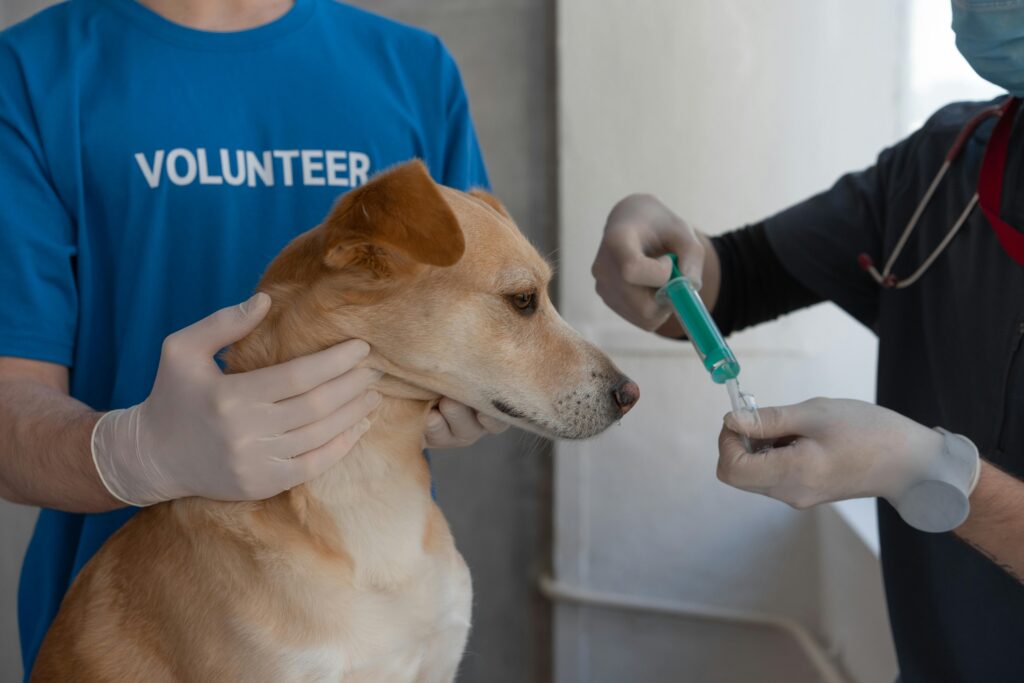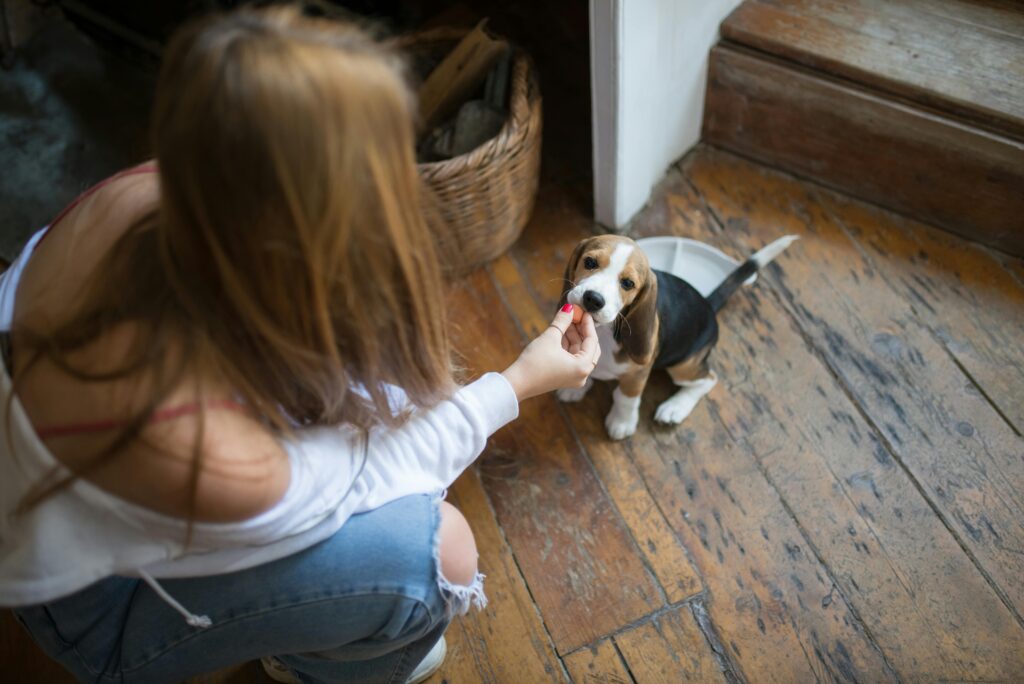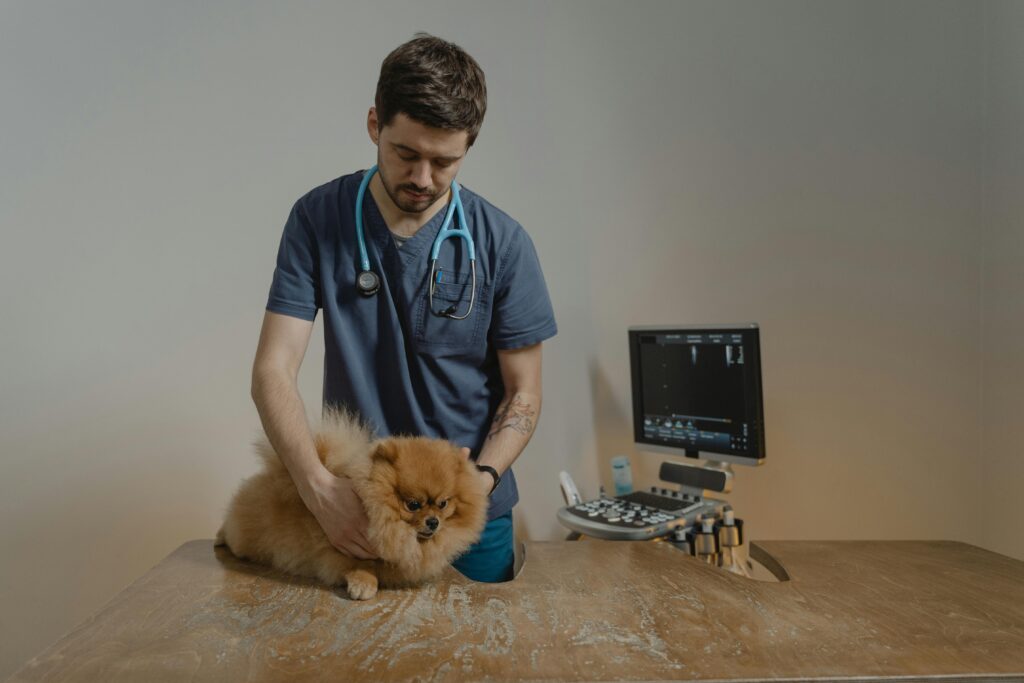It can be hard to give dogs medicine, especially if they are picky or scared. Pet owners often have trouble giving their pets the right medicine, whether a pill, a drink, or a treatment on the skin. This article teaches easy and safe ways to give medicine to your dog, cat, or other common house pets. For your and your pet’s comfort, we will also give you some tips on how to make the process easy. It will show you how to do everything, from picking the right tools to using awards. You can give your pet the care they need if you know what to do. These easy tips will help you keep your pet healthy, happy, and comfortable while they take their medicine.

Understand Your Pet’s Medication Type
First, you need to know what kind of medicine your pet needs. Different medicines must be taken in other ways, such as pills, drinks, injections, or topical treatments.
Know the kind of drugs
Not all pets need pills. Some need drinks, powders, or creams. Dogs often need pills, but cats might need flavored beverages. Topical medicines are frequently used to treat skin problems or bugs. Knowing the style will help you prepare for the right way to give it.
Read the label and vet instructions
Always read the medicine’s label and do what your vet tells you. It tells you how much medicine to give, how often, and if there are any other instructions. You should never change the amount without your vet’s okay. Not all drugs should be taken with food, but some should be given when you’re not hungry.
How to properly store medicine
Storage that works well is important. Different drugs need different places to stay cool and dry. Some need to be kept in the fridge. Do not give your pet medication if it smells weird or has passed its expiration date. Instead, call your vet.
Prepare Before Giving Medicine
Before you start, ensure that everything is ready to make the process faster. Keep things cool and make both of you feel better. Pets can tell when something is wrong.
Have all supplies ready
Keep the drops, treats, medicine, towel, and medicine close by if needed. You might need a pill popper or a small piece of food along with the pill. This helps keep your pet from running away or getting scared and saves time.
Stay calm and confident
Pets pick up the way you feel. Those who are worried will also feel nervous. Talk in a happy, soft voice, and try not to move quickly. Keep your cool so your pet feels safe and trusts you.
Use a quiet space
Pick a quiet room where your pet will feel at ease. Stay away from noises or other distractions. Your pet can not get away, so shut the door. A quiet place helps your pet stay focused and less scared.
Giving Pets Pills
Many times, pills are used to give medicine to cats and dogs. But some pets do not want to take pills, so learning tricks that make it easier is helpful.
Hide the pill in food
Many pets take medicine if it is hidden in something tasty, like peanut butter, cheese, or wet food. Ensure your pet gets the whole treat, not just the food around it. Use a pill pocket instead. These are made to hold pills and come in safe flavors for pets.
Use a pill popper
Use a pill popper if hiding the pill does not work. This tool helps you give your pet the pill and get it down quickly by putting it in the back of their mouth. Hold their head gently, put the pill popper in, and let go of the pill close to their throat. Then close their mouth softly and stroke their throat to help them swallow.
Give praise and rewards after
After giving your pet medicine, you should always provide them with a treat. Treat them, pet them, or talk nice things to them. They learn that medicine time means good things will happen next because of this good experience.
Giving pets medicine in a bottle
Many cats can handle liquid medicine better, especially if it is flavored or mixed with food. People often give it to cats, dogs, or other pets that can not swallow pills.
Use a syringe or dropper
Most liquid medicines come with a dropper or needle made of plastic. Put the right amount of medicine in it and gently press it into your pet’s cheek, not down its throat. Hold their head still and slowly squirt the liquid at them.
Do not rush the process
Take it easy so your pet has time to swallow. They might gag or spit it out if you squirt too fast. Small amounts should be given to lick or drink until the full dose.
Mix with food (if allowed)
Some liquid medicines can be mixed with soup or food that is wet. It is easy to swallow, and the taste is hidden. Some medicines must be taken alone, so ask your doctor if mixing them with food is okay.
Giving Topical Treatments
Topical medicines are used to treat cuts, skin problems, and fleas. Instead of being eaten, these medicines are put on your pet’s skin.
Find the right spot
These medicines are meant to be put on the back of the neck, where your pet can not lick them. Use other creams or ointments as advised, putting them on where needed. Cut the fur in half so that the medicine can reach the skin.
Wear gloves if needed
Some skin treatments are not meant for people to touch. When using these medicines, wear gloves and wash your hands afterward. This will keep you and your pet safe from any harm.
Prevent licking or scratching
After giving the medicine, keep an eye on your pet. Put a pet cone over it if they try to lick or scratch the spot. This keeps them from getting hurt and makes the medicine work better.
Putting drops in your eyes or ears
Pets with allergies or diseases might need drops in their eyes or ears. It might be hard at first, but it gets easier with practice.
Hold your pet gently
While putting the drops on your pet’s head, hold it steady with one hand. Wrap them in a towel like a blanket to keep small cats from moving around. Talk slowly to help them calm down.
Aim carefully
Hold your eyelid open and aim above your eye for eye drops. Let the drop hit the ground, and then let your pet blink. Hold the ear up and put the medicine in. Then, gently rub the ear’s base to help the medicine spread.
Reward after each dose
After giving drops, give treats or love. This makes people feel good, which lowers their fear and builds trust in future treatments.
Making Medicine Time Positive
It is easier for both of you to get your pet to enjoy taking its medicine. Simple, helpful steps can help you teach them to work together.
Give treats and praise
Before and after giving your pet medicine, please give it a small treat. Use a happy voice to praise them. They will start to look forward to medicine time because it means good things.
Do it without medicine
Use empty tools to train your pet if it gets scared. Touch their mouth or ears gently, and then give them a treat. This training makes it easier for them to get used to the process.
Be gentle and patient
Do not hurt or scare your pet. If they do not want to, wait a while and try again later. Your pet will learn they are safe with you if you are patient and kind.
Taking Care of Pets That Are Hard to Handle
Some pets are more scared or angry when they have to take drugs. You might need to change how you do things or get help.
Use a towel wrap
Put a soft towel around your pet if it scratches or bites. This lets you better handle them and keeps their legs inside. Make sure it fits well, but not too well, so they can breathe.
Get help from another person
Having a second person around can help with things sometimes. While the other person gives the medicine, the first person can hold or comfort the pet. Working together can make everyone less stressed.
Call your vet if needed
Call your vet if your pet will not take its medicine or gets too stressed. They may tell you about a medicine that is easier to take or show you how to safely give it. Sometimes, they may provide a shot instead.
Advice for Different Kinds of Pets
Approaching each pet differently is best. Animals, like dogs and cats, are unique and react to drugs in their own unique ways.
Giving dogs medicine
Food tricks and treats work well for most dogs. Hide pills or keep them busy with their favorite treats. A lot of dogs want to please you, so praise works wonders.
Giving cats medicine
Cats like to be on their own and can be hard to control. When you wrap, be gentle and try to move slowly. Most of the time, cats can handle liquid drugs better than pills.
Giving other pets drugs
Pets like rabbits, birds, and snakes may also need medicine. As your vet tells you, use tools like droppers or needles. These pets may need to be held with care, but a strong grip is required to stay still during treatment.
Conclusion
When you first start, giving your pet medicine might seem hard. But if you follow these steps, it will be easy. Another easy and gentle way that works is to put the medicine in your eyes. This works for pills, liquids, creams, and eye drops. Please plan ahead, stay calm, and treat your pet when they do what you ask. Do not rush; take your time and find what works best for your pet. If you have any problems, you should always ask your vet for help. With your love and care, your pet will stay healthy and happy, and giving them their medicine won’t be hard.



